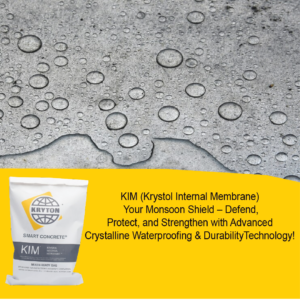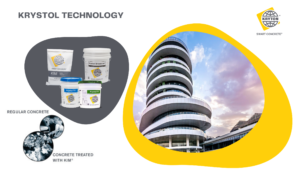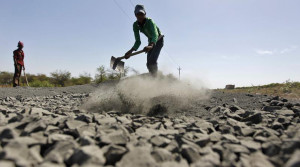Introduction to the impact of rain on construction and industry
17th Jul 2024 Concrete WaterproofingRain is a natural phenomenon that is essential for life on earth. It is a vital component of the planet’s ecosystem, but it can have a significant impact on various industries, including the construction industry. Rain can be both a blessing and a challenge for some industries, depending on the circumstances.
The construction industry relies heavily on favorable weather conditions to carry out its tasks effectively. Rain can cause significant delays in construction projects, leading to increased costs and potential safety hazards. Moreover, it can weaken the structure of a building and cause long-term damage, leading to expensive repairs or setbacks.
1. The challenges of rainy weather in construction industry
Rainy weather can be a major challenge for the construction industry. In the construction industry, rain can cause delays in project timelines, damage to materials, and even lead to safety hazards for workers. Wet conditions can make it difficult to pour concrete, lay bricks, and handle other building materials, leading to delays and cost overruns. Water can also cause damage to pre-existing structures, leading to costly repairs and setbacks.
Overall, the challenges of rainy weather in the construction industry are numerous and require careful planning and preparation to mitigate their impact. From scheduling delays to quality control issues, it is important for industries to be proactive in their approach to managing rain-related risks.
Specifically, rain can affect outdoors and exposure to the elements, heavy rain can damage equipment and disrupt operations. This can lead to delays in construction schedule, which can have a ripple effect.
Additionally, Rain can cause delays or even accidents. Slippery site conditions, roads and reduced visibility impose hazards.
Overall, the impact of rain on the industry can be significant and far-reaching. Companies operating in this industry need to be prepared for the effects of rain and have measures in place to mitigate any potential damage or disruption to their operations.

Ways construction industry can prepare for rainy weather
Rainy weather can have a significant impact on the construction industry. However, there are ways to prepare for rainy weather and minimize its impact on your business operations.
One of the most important things you can do is to plan for rainy weather ahead of time. This means conducting regular maintenance checks on your equipment and ensuring that any necessary repairs are made before the rainy season hits. It’s also a good idea to have a backup plan in place in case of unexpected delays or equipment failure.
Another important step is to ensure that your employees are properly trained in safety procedures for working in wet conditions. This can include wearing appropriate safety gear, using non-slip surfaces, and avoiding working in areas with standing water.
In addition, it’s important to have good communication with suppliers and customers. This means keeping them informed of any potential delays or issues that may arise due to the rainy weather. By being transparent and proactive, you can help to minimize the impact of rainy weather on your business operations.
Finally, it’s important to have a good insurance policy in place that covers any potential damages or losses due to rainy weather. This can give you peace of mind and help you to recover quickly in the event of any unexpected incidents.
By taking these steps to prepare for rainy weather, you can help to minimize its impact on your construction business and keep your operations running smoothly even during the wettest months of the year.
2. How does humidity cause corrosion? That’s an important question in the mass metal finishing and parts coating industries. To prevent and manage humidity-based corrosion, we have to first understand how it works.
Metal corrodes at a much greater rate under humid conditions. This happens because the moisture-saturated air reacts with oxygen and electrons on the surface of the metal. The longer metal components are exposed to humid air, the faster they will generally corrode & this impacts steel used in the structures mainly.
This type of atmospheric corrosion can occur when the amount of moisture in the air reaches critical humidity, which is the point at which water no longer evaporates or gets absorbed from the atmosphere. In most conditions, this happens at 80% relative humidity (RH).
But it’s not simply the humidity that causes corrosion; it is the change in temperature along with a significant increase in humidity that causes moisture to form on parts. There are two ways this can happen.
First, the relative humidity increases along with the temperature. Humidity changes during the day largely depending on the temperature. You’ve surely experienced this first-hand on a muggy summer afternoon. Every 50°F (10°C) increase in the temperature can double corrosion activity.
Second, when a surface cools below the temperature of the surrounding air, moisture will form on the surface as condensation. Later, when the sun comes up and the temperature rises again, humidity causes moisture to condense on cool, metal surfaces.
The higher the relative humidity, the smaller the temperature difference needed for condensation to form…which sets the stage for corrosion to occur.
KRYTON Buildmat product Krystol Internal Membrane (KIM) is a crystalline admixture that enhances concrete durability and protects steel by waterproofing the concrete. KIM lowers concrete permeability and replaces externally applied waterproofing membranes. By stopping water transmission through concrete, KIM protects against chemical attack and corrosion of reinforcing steel, adding durability and longevity to concrete. furthermore with admixtures it improves concrete performance by facilitating easier placement and consolidation, reducing the risk of segregation and improving surface finish. By optimizing the water-cement ratio, along with plasticizers and superplasticizers Kim contributes to increased strength and durability. This comprehensive approach ensures that concrete structure can withstand the harsh condition of monsoon climates, providing long – lasting reliability and performance.









 SMART CONCRETE®
SMART CONCRETE®